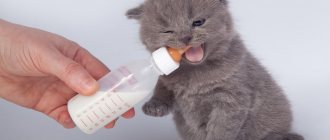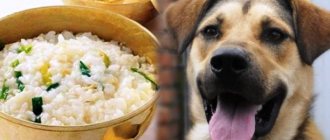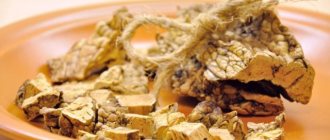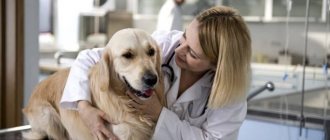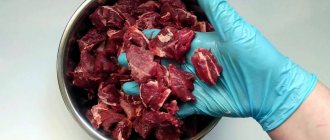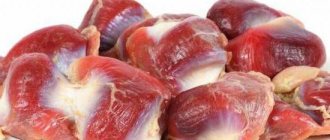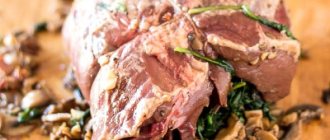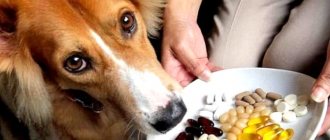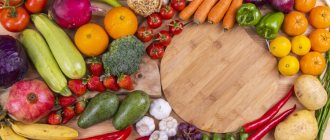Nutritional quality of offal
The basis of the carnivore menu is animal protein. In addition to meat, four-legged animals enjoy eating kidneys, lungs and udders. Adding them to food will not only diversify the menu, but will also have a positive effect on the body.
Beneficial features
Offal contains a large percentage of nutrients. In this they are superior to regular meat. All parts of the animal carcass are an irreplaceable source of animal protein, without which the life of a four-legged friend is impossible.
The trim contains the following elements:
- phosphorus
- responsible for oxygen enrichment and skeletal health; - iron
- regulates oxygen metabolism; - zinc
- necessary for the functioning of the nervous system and healthy coat; - potassium
- supports kidney and heart function; - selenium
is a natural antioxidant; - magnesium
- needed for health and good muscle development; - iodine
- ensures the smooth functioning of the endocrine and cardiovascular systems.
Trip is rich in amino acids, vitamins B, A, K, E and D. The latter is necessary to strengthen the pet’s muscles and bones, prevent the development of malignant tumors, rickets and other autoimmune diseases. Giblets have no equal in vitamin D content.
Eating trimmings is especially useful for dogs living in the northern regions. The lack of sunlight and the resulting deficiency of chemical elements is compensated by the addition of tripe.
Offal is an indispensable source of energy for cells, as it contains Omega-3 and Omega-6 amino acids. In addition, liver contains a small proportion of carbohydrates and fats, so it is classified as a dietary product.
Unpleasant consequences
Sometimes a four-legged friend has an individual intolerance to some or all types of tripe, even in small quantities. Such a reaction is expressed in the form of vomiting, diarrhea or food allergies.
A pet suffering from intolerance begins to behave irritably. He becomes lethargic and refuses to eat. A rash characteristic of an allergy appears on the surface of the face, paws, and ears. Sometimes it is visible on the armpits and in the anal area.
An excess of the allergen provokes infections on the skin or ears. The body becomes covered with red itchy spots, and hair loss occurs.
To eliminate the problem, it is enough to exclude allergens in the form of chicken and animal entrails. And in the future, add only lean varieties of meat to the allergy sufferer’s menu.
Different breeds
It is not recommended to feed to representatives of breeds with characteristically sensitive digestion.
The nutritional qualities of the udder and high fat content are necessary in feeding service and sports breeds, as well as captive breeds, especially in the autumn-winter period. Under additional loads and in low temperature conditions, fatty foods in reasonable quantities do not pose a danger, and are even very useful.
It is also recommended for representatives of breeds with a high risk of allergies: Chow Chow, French Bulldog, Akita Inu, Great Dane, Shar Pei, etc.
At what age is a dog given giblets and trimmings?
Puppies are accustomed to unusual food only after they are 5-6 months old. Previously, at 2-3 months, it is allowed to treat babies with boiled udders or chicken necks.
When introducing complementary foods, it is recommended to prepare broth or jellied meat for puppies. They contain many substances and elements that have a positive effect on growth and development.
Adult dogs happily eat raw offal and trimmings. But older pets are no longer able to cope with them, as they can choke or damage their teeth with a hard piece. The presence of raw ingredients in the diet is undesirable for them. However, well-cooked and finely chopped food is well received.
What is a boil
A furuncle is a purulent inflammation of the hair follicle.
The immediate cause of the development of the pathological process is staphylococcus - a conditionally pathogenic microorganism that is normally present on the surface of the skin, but under certain conditions penetrates its layers, causing inflammation.
Factors contributing to the development of a boil are:
- skin microtraumas;
- violations of personal hygiene rules;
- lack of vitamins in the body;
- diabetes;
- endocrine system disorders;
- diseases of the gastrointestinal tract;
- chronic dermatological diseases;
- decrease in the body's defenses.
A boil in the groin and labia can occur not only due to poor hygiene and other aforementioned factors, but also due to wearing underwear made of synthetic fabrics or the wrong size (as a result of constant rubbing of the skin).
A furuncle in the armpit most often occurs in the fair sex after frequent hair removal and depilation in this area. The development of inflammation is promoted by the use of antiperspirants. Inflammation under the armpit in men is most often caused by increased sweating and neglect of personal hygiene.
The process of inflammation development is as follows: first, a cone-shaped nodule appears on the skin, around which there is redness and slight swelling; after 1-2 days, a rod forms at the top of the nodule - a purulent whitish-gray formation.
At this moment, it is strictly forbidden to open or remove the boil on your own - the released pus promotes the spread of the pathogen to neighboring tissues, in addition, the infection penetrates deeper through the open lesion, which can lead to more serious consequences, including blood poisoning.
The final stage of development is the breakthrough of the boil and the leakage of pus onto the surface of the skin. An ulcer forms at the site of the breakthrough, which heals over time.
Typical places for a boil to develop are: the skin of the neck, face, and groin area. The appearance of several boils in different places is called furunculosis.
Stewed udder with vegetables
- Onion 1 pc.
- Carrot - 1 pc.
- Bell pepper - 1 pc.
- Udder - 300 g
- Spices, salt, herbs
Preparation:
Grate the carrots, cut the onion into cubes, and cut the pepper into thin strips. Fry all the vegetables in a frying pan in oil, add the boiled udder cut into cubes, simmer together for a while, add tomato paste, salt, spices, herbs, 0.5 cups of water, and turn off after a minute. Let it sit, soak in the aromas of the vegetables, you can add a clove of chopped garlic and serve with any side dish. You can make minced meat from the boiled udder and fry pies, and also look at the recipe - delicious, flaky, very easy to prepare!
What by-products can be given to a dog: allowed products and how to prepare them
Using tripe will not only diversify the menu, but also enrich the body with essential substances. They use different parts of the carcass, boiling them or offering them raw.
Avian
Bird carcass parts are a cheap and nutritious food. They contain a lot of collagen and protein. However, poultry offal rarely provokes allergic reactions.
Hearts, liver and stomachs
Chicken or duck liver contains vitamins A and B12. Heart tissue and ventricles of birds are an excellent source of protein. They include zinc, iron, collagen. They should be offered to four-legged animals only in boiled form, no more than 2 times a week.
Too much vitamin A worsens bone health and reduces muscle mass. Heat-treated liver is added to porridge or used to make soup.
Necks, heads and paws
These parts are a favorite treat for your pet. In addition, the necks, heads and paws saturate the pet with calcium, phosphorus, collagen and elastin.
Broth or jellied meat is prepared from chicken feet to feed puppies. The necks and heads make healthy soups and porridges. They do not have hard bones and are easy to digest.
However, it is important to remove their beaks and claws before feeding them. It is permissible to use poultry entrails without prior heat treatment.
Beef
Beef by-products are often used in dog menus. All parts of a cow carcass have a positive effect on the four-legged body, because they are a storehouse of vitamins and important elements. Beef udder, kidneys, heart and other innards are suitable for dogs.
Heart
The heart has a denser structure than meat due to the large amount of protein. It contains selenium, zinc, phosphorus, important amino acids, elastin and collagen. It is useful to use it raw, since heat treatment destroys a large proportion of the elements.
Scar
The rumen is a part of the cow's stomach that contains a lot of protein, enzymes, special bacteria and amino acids. These substances promote better digestion of food, neutralizing toxins and strengthening the dog’s immunity. Green tripe is considered the most useful.
Before treating your pet to a delicacy, the tripe is thoroughly washed. It is acceptable to eat raw and cooked organ. To remove the unpleasant odor, the tripe is frozen for two days.
Language
This is an expensive product, so it is rarely added to animal diets. The tongue is used both raw and processed. The chemical composition is similar to the spleen. Suitable for training the jaw muscles.
Spleen
An organ containing large amounts of protein, iron and amino acids. Before use, the spleen is boiled and given no more than once a week. An overabundance of the spleen causes diarrhea.
Udder
Beef udder contains a high percentage of fat, so it should not be used frequently in the menu. Abuse provokes digestive system disorders and allergic reactions.
In small quantities, the udder is useful during increased activity for building muscle tissue. It is boiled or served raw, after removing excess fat and cutting into small pieces. Veterinarians give recommendations on how long to cook beef udder for dogs: the cooking time takes 2-3 hours and depends on the age of the animal that will eat this product.
Beef brains
The brain contains many substances such as lipids and choline, which are useful to saturate the four-legged body with before the planned mating. In addition, brains are a nutritious product that can quickly satiate a pet. The brains are boiled before adding to the porridge.
Tails and cartilage
They have little protein, but an abundance of calcium and phosphorus. The tail and cartilage are a storehouse of useful amino acids and trace elements. Dogs of any age love to chew cartilage for a long time, so even puppies are allowed to eat them during the change of teeth. Veterinarians recommend the use of tails and cartilage without prior boiling.
Cheeks, nose, lips
These parts of the carcass are rich in protein and consist of highly digestible muscle tissue. Broths and jellied meat are prepared from them, suitable for feeding puppies or elderly animals. The main thing is to cut off excess fat from the surface of the raw material. The cheeks, nose and lips themselves are added to food in boiled and chopped form.
Lung
This organ is not rich in animal protein and has mainly connective tissue. Liver is poorly digested and absorbed, so it is not welcome in a dog’s diet. Eating lung can cause vomiting and intestinal upset. It is used only as an additive to the main meal in small quantities. For this purpose, the lung is boiled and cut.
Bovine testes
This is a real delicacy that four-legged animals really like. The testes contain very tender meat, suitable for feeding puppies, lactating females and weakened individuals. They are not recommended only for males who will be mating in the near future - bull testes cause overexcitation of the male's nervous system and complicate mating.
Fresh parts of the bull are boiled for half an hour and then peeled off with a knife. After cooking the bovine testes, it is recommended to pour out the broth, and finely chop them before adding them to the porridge.
Liver and kidneys
These organs contain vitamins A, B12, which are essential sources of folic acid and strong antioxidants. The liver does not contain toxins and has a good effect on the functioning of the reproductive organs.
Use tripe no more than once a week. Thus, its volume in the diet should not exceed 5%. A large amount of liver and kidneys in the diet leads to disruption of the digestive system. Raw entrails are heat treated and cut into small pieces.
Pork
Pig liver and trimmings are quite fatty raw materials, so they must be introduced into food with caution. Excessive consumption of pork offal leads to obesity or the development of food allergies.
Heart
Pork heart is used in the diet only after fat has been removed from its surface. Consuming this organ increases your pet's stamina. The heart contains coenzyme Q10, which improves immunity and prevents aging of the body.
Selenium, zinc, phosphorus and beneficial acids help build the necessary muscle mass and maintain the required energy level. The structure of the heart resembles muscle tissue. It is allowed to introduce raw or cooked product into the dish.
Liver and kidneys
Eating them helps you get another source of vitamins A, B, folic acid and iron. All these substances stabilize the functioning of the nervous system, saturate cells with oxygen and participate in metabolism.
The liver is especially useful in the nutrition of lactating females and growing young animals. It is preferable to feed animals raw liver and kidneys. To prevent pets from becoming infected with worms, the insides are placed in the freezer for several days. Heat treatment is also possible, but it will significantly reduce the amount of useful elements.
Spleen
In terms of the presence of amino acids, pork spleen is close to liver and muscle meat - this organ contains a lot of protein and iron. Spleen is suitable for adults and elderly individuals.
Puppies are given a spleen only after 6 months. It should be added no more than once a week. The spleen is boiled for at least 2 hours, crushed and combined with porridge.
Ears and cartilage
This is a cheap raw material with a large number of elements, without which the proper development of bone and muscle mass is impossible. The trim trains the jaw well, cleans the teeth and massages the gums.
Before use, the ears and cartilages must be thoroughly cleaned of dirt using water or a knife and placed in the freezer for three days. Then they are treated with boiling water.
Is there any harm?
The udder consists of connective tissue with a large amount of fat, which requires strict control in the animal's diet. If it is consumed excessively, negative symptoms may appear that indicate problems with the pet’s health:
- disruption of the gastrointestinal tract;
- obesity;
- liver dysfunction and diseases;
- problems with the pancreas.
It is also important to distinguish the milk (working) udder from the dry udder (from a calving or old non-milking cow). Milk udders are not as fatty as dry udders, but are not suitable for dogs with milk protein intolerance.
At the same time, the dry udder has a high fat content and is dangerous for individuals with liver diseases or a sensitive digestive system.
Berlin schnitzel
Beef udder - 700 grams Chicken egg - 1 piece Onion - 2 medium onions Flour - 40 grams Breadcrumbs - 30 grams Salt, peppercorns - to taste; cloves, bay leaf - 1 each
How to cook Berlin schnitzel1. Rinse the beef udder, soak in cold water, boil in 2 liters of water, add onion, salt and pepper, cloves and bay leaf. 2. Place on low heat under the lid and cook for 4 hours.3. Then cut the offal into slices 0.5 cm thick, roll in flour, egg and breadcrumbs, fry in a frying pan over medium heat without a lid for 3 minutes.
We suggest you familiarize yourself with: Tincture of potato flowers with vodka, application
The second basis of nutrition is rice.
When talking about what kind of cereal to give your dog, we cannot forget about this valuable product. It is the basis of dietary nutrition and is included in all ready-made premium food. Therefore, do not forget about it if your dog eats natural products.
It is no secret that nutritional properties depend on the type of rice and the method of processing the cereal. It is best to choose unpolished grains, brown or brown rice. It retains healthy fiber, while polished cereal is a source of starch. So what are the best cereals? Dogs should be fed buckwheat and rice. They can be combined with each other. You can boil the cereals separately, and then mix them with meat and broth in a cup.
If you take unpolished rice, be sure to rinse it well. It cooks for about 35 minutes, after which you need to let the porridge brew, otherwise mucus will appear in it. If your dog is picky and does not eat porridge well, then it is better to cook the rice in salted water. Proper dog porridge can also be prepared from polished cereals. In this case, a spoonful of olive oil is added to it during cooking. This way it turns out more tasty and does not stick together.
What parts of the carcass should you not give to your dog?
Your pet should not eat tubular (hard, hollow) bones or skins. The skin of chickens or turkeys is also contraindicated - these raw materials contain fat that negatively affects health. Bird skin is not introduced in any form, because it has a bad effect on the functioning of the intestines and liver.
The skin of pigs or cows is a source of intestinal parasites that are dangerous for your pet. Tubular bones cause damage to teeth, and their fragments injure the esophagus. Eating prohibited bones causes suffocation and can lead to the death of a friend.
Is it possible raw?
You can give it raw, but there are big risks. The mammary gland of a cow accumulates medicines: antibiotics and hormonal drugs. Before slaughter, the cow could have mastitis, and by eating the udder, the dog will also receive drugs that negatively affect the body.
Therefore, a boiled product is recommended. But you need to take into account that during cooking the bulk of the beneficial substances are destroyed.
How to select and store offal for dogs
For cooking, only fresh products are used that have no signs of spoilage or repulsive aroma. When buying them on the market from a seller, you need to know whether the carcasses have passed veterinary control.
The purchased entrails and trimmings are stored in the refrigerator. If the liver was bought for future use, then it is divided into portions, well packaged and left in the freezer. Such preparations are stored for up to 2 months.
It is advisable to boil thawed or fresh tripe to be completely sure of its safety. If there is any doubt about the quality of the food, soak the entrails for 30 minutes in water with dissolved baking soda. The solution is made from 1 tbsp. spoons of soda per 1 liter of water. After soaking, the trimmings are thoroughly rinsed under the tap.
Signs of spoilage are an unpleasant odor, creamy consistency, changes in color and structure. Such food should be disposed of to prevent your pet from getting food poisoning.
How to cook beef lung in a slow cooker
Place the lung cut into pieces into the slow cooker. Fill with water and add spices to taste. Place a steaming basket on top to prevent the offal from floating during cooking. Cook in the “Stew” mode for 40–60 minutes or a little longer.
The question of how much to cook lung usually faces dog owners who prefer to feed their pets natural products. But, even if the component is planned to be used for preparing “human” food, the processing parameters will be the same. One nuance is important here - beef lung as a whole will have to be boiled for at least 2 hours. At the same time, although it will reach readiness, it will become quite tough and practically inedible. It is better to initially cut the offal into small pieces. In this case, it will take approximately 20-30 minutes to process it.
Cow's udder with mayonnaise
Initially, we select an udder from the market - beautiful, clean, smooth. We bring it home.
Rinse well and fill with cold water. Bring to a boil, drain the water, add clean water again and cook, adding salt, peppercorns and bay leaves. I usually have it ready in 1-2 hours, someone writes that they cook for 3-4 hours. My advice is to try it. An hour has passed - stick a knife into the udder, if it goes in easily, then it’s ready. You can cut off a piece and try it to make sure that it is not hard, soft and ready. If not, cook some more.
It is now ready for further action. The first option is to simply cut into slices.
Make the dressing: mix mayonnaise with mustard, lemon juice, olive oil, salt and pepper.
The result was a delicious mayonnaise dressing.
Add it to the meat, you can sprinkle with dried basil and add pickled tomatoes. Then we simply dip the pieces of meat into the sauce and eat.
Reviews
Evgeniy, Vologda
“You can give beef lung, but it’s better not to. Still, the risk of infection with some parasites is too high - the meat is not of the highest quality. Personally, for the same money I buy a small amount of good tenderloin, but I’m calm about my dog.”
Galina, Arkhangelsk
“This is too dietary a product for a dog. But there's nothing wrong with it. Some on the forum write that beef lung should not be given to pets, just like kidneys and liver. But the lungs for a cow are not the same filter as for a person - animals do not smoke. So for a change it's possible. I usually give it to my Labrador once a week. I cut the lung into small pieces, boil it and mix it with rice.”
Making special treats at home
Heads, legs and necks of chicken or turkey are often used to make broth or jellied meat. The latter is best prepared from chicken or turkey legs. They are soaked in cool water and then boiled for about 2-3 hours over low heat, periodically removing the foam.
You should not add salt or spices to the dish. After cooking, the broth is filtered and poured into molds, which are placed in the refrigerator. Jellied meat is suitable as an addition to porridge or as a separate dish.
A dried delicacy is made from the udder, which they take with them on a trip, for a walk, or treat them to during training. The udder is washed and dried well. The next step will be freezing the raw materials. In this form, the udder is cut into small pieces and laid out on a baking sheet. Dry in the oven for 2-3 hours at a temperature not exceeding 80 degrees. Keep chips in a closed container in the refrigerator.
Porridge is made from the heart for puppies and adults. First, prepare the broth, then take out the cooked meat and chop it finely. Cereals, chopped vegetables, and herbs are added to the liquid. After preparing the cereal, the porridge is combined with pieces of tripe and cooled.
Store-bought dried
Dried dog treats from the store are very popular and well-deserved, since owners do not have to waste time on cooking.
When choosing purchased offal, dog breeders recommend first of all paying attention to the composition. The only thing that should be listed there is “dried pieces of beef lung”
There should be no additives or additional ingredients in the composition.
According to reviews from owners, dried lung for dogs is ideal as a reward during training, as it does not stain your hands and is easily digested.
Prices range from 100 rubles for a 10 g bag to 600 rubles for a 3 liter container. Now in pet stores you can find natural products from the following companies:
- Titbit;
- GreenQZin;
- "Farm delicacies";
- "Country delicacies";
- "Zoogourmand"
Beef Stroganoff
- 1 onion
- Salt, chopped or dried herbs, spices
- 2 tablespoons sour cream
- 0.5 glasses of water
Preparation:
Cut the boiled cow's udder into cubes.
Cut the onion into strips, fry in oil, add the udder to it, lightly fry with the onion together, add sour cream, spices, salt, herbs and 0.5 cups of water. Let it simmer for a minute and turn it off, otherwise it will become soft and lose its elasticity. Now you can boil pasta, potatoes or porridge, pour over the resulting gravy - and lunch is ready!
Cooking porridge
Beef lung for dogs: how much to cook and how to cook
Having decided on the choice of cereals, you need to start preparing the porridge. To diversify your diet, you can take several types of grains and cook them together. For example, a third of buckwheat, a third of rice, and a third of millet in half with yachka or oatmeal. This mixture is usually accepted normally by all pets. Now pour boiling broth or water over it and cook until tender. In order for grains to be properly absorbed by the dog’s body, they need to be cooked twice as long as when we cook porridge for ourselves. Accordingly, you need to calculate the amount of liquid so that it is enough. The mixture presented above is placed in a ratio of 1:5 into a boiling liquid.
At the end of cooking, you can add a few tablespoons of vegetable oil or a piece of butter. It’s very easy to check the readiness: scoop the porridge with a spoon, if it forms a lump, then you can turn it off, and if it drips, then cook for some more time.
